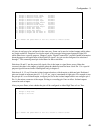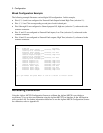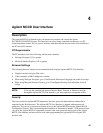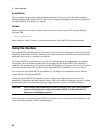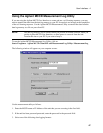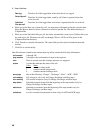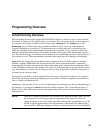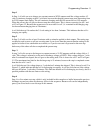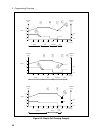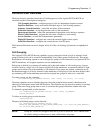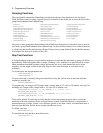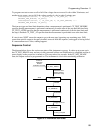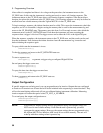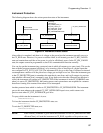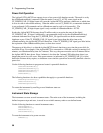Programming Overview - 5
51
Step 1
In Step 1, all cells are set to charge at a constant current of 0.295 amperes until the voltage reaches 4.2
volts. It continues charging at the 4.2 volt limit, however the charging current now starts decreasing from
its 0.295 ampere limit setting. The cell continues charging until the cell current falls to 0.02 amperes.
When this occurs, the cell goes to the next step, the resting state. This is shown occurring for cell 1 and
cell 2 in Figure 5-2. Because the current test was never true for cell 3, it remained in the charging step
for the maximum charging time of 20 minutes.
A cell fails the test if it reaches the 3.8 volt setting in less than 5 minutes. This indicates that the cell is
charging too rapidly.
Step 2
In Step 2, all cells rest for at least 10 minutes with no stimulus applied to their outputs. The resting step
can thus be used to move a cell into a resting state if you do not want the present stimulus settings to be
applied to it after it has satisfied the test criteria, or if you do not want it to proceed to the next step
before any of the other cells have completed the present step.
Step 3
In step 3, all cells are set to discharge at a constant current of 0.295 amperes until the voltage falls to 3
volts. This voltage is referred to as the end of discharge voltage or EODV. If the voltage drops to 3 volts
after five minutes has elapsed, the cell goes to the resting state. This is shown for cells 1 and 2 in Figure
5-2. The maximum time limit for the discharge step is 15 minutes, however the step is completed sooner
than that for cells 1 and 2.
A cell fails the test if its voltage drops to 3 volts before 5 minutes has elapsed. This is shown for cell 3 in
Figure 5-2, which indicates that the cell is discharging too rapidly. A cell also fails the test if the voltage
does not fall below 3 volts after 15 minutes. This indicates that the cell is discharging too slowly, due to a
possible problem with the test fixture or the wiring.
Step 4
Step 4 is a five minute rest step, which is only included in this example as a buffer between the previous
discharge step and any other step that may follow in the sequence. Because cells can be independently
paced, you do not have to use rest steps in this manner.



